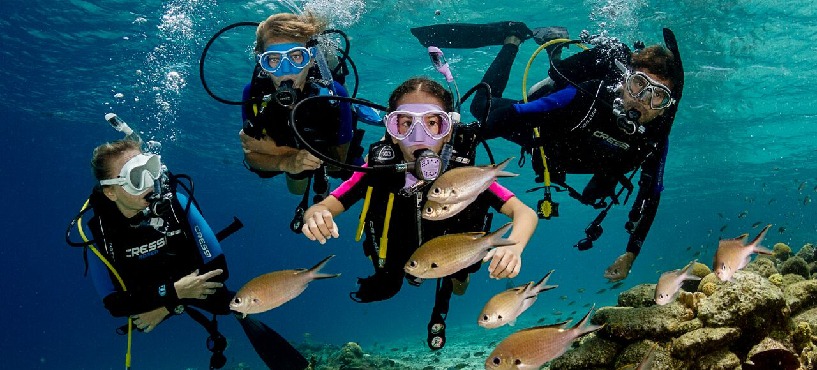Introduction:
Bali, the “Island of the Gods,” is not only a paradise for beach lovers and cultural enthusiasts but also a top destination for diving enthusiasts. With its rich marine biodiversity, vibrant coral reefs, and fascinating shipwrecks, Bali offers some of the best diving spots in the world. In this guide, we will explore the premier diving locations in Bali, highlighting what makes each site unique and providing tips for a memorable underwater adventure.
Section 1: Top Diving Spots
USAT Liberty Shipwreck
Location: Tulamben
Description: The USAT Liberty Shipwreck is one of the most famous dive sites in Bali. This World War II cargo ship was torpedoed by a Japanese submarine and later beached in Tulamben. The eruption of Mount Agung in 1963 pushed the ship into the water, creating a spectacular dive site. Divers can explore the wreck, which is now home to a variety of marine life, including schools of fish, barracudas, and colorful corals.
Crystal Bay
Location: Nusa Penida
Description: Crystal Bay is renowned for its crystal-clear waters and excellent visibility. It is a popular spot for encountering the elusive Mola Mola (sunfish) during the season from July to October. The dive site also features vibrant coral gardens, abundant marine life, and the chance to see reef sharks and turtles.
Blue Corner
Location: Nusa Lembongan
Description: Blue Corner is known for its thrilling drift dives, strong currents, and diverse marine life. This site is best suited for experienced divers due to its challenging conditions. Highlights include encounters with large pelagic species such as manta rays, eagle rays, and reef sharks, as well as stunning coral formations.
Section 2: Unique Underwater Experiences
Manta Point
Location: Nusa Penida
Description: Manta Point is famous for its resident manta rays. Divers can witness these majestic creatures gliding gracefully through the water, often coming very close to the divers. The cleaning stations at Manta Point attract mantas year-round, making it one of the best places to see them up close.
Menjangan Island
Location: Northwest Bali
Description: Menjangan Island, part of the West Bali National Park, offers pristine diving conditions with stunning coral walls, clear waters, and abundant marine life. The island’s dive sites are known for their vibrant coral gardens, schools of fish, and the occasional sighting of whale sharks and dolphins.
Amed and Jemeluk Bay
Location: Amed
Description: Amed and Jemeluk Bay are excellent spots for both beginners and experienced divers. The area boasts beautiful coral reefs, artificial reefs, and a Japanese shipwreck. Divers can explore the diverse marine life, including pygmy seahorses, nudibranchs, and various species of reef fish.
Section 3: Diving Tips and Safety
Choosing a Dive Operator
When selecting a dive operator in Bali, it’s essential to choose a reputable and certified company. Look for operators with experienced instructors, good reviews, and adherence to safety standards. Some well-regarded dive centers include Bali Diving Academy, AquaMarine Diving, and Bali Scuba.
Dive Season and Conditions
The best time to dive in Bali is during the dry season, from April to October, when visibility is at its peak, and sea conditions are generally calm. However, diving is possible year-round. Always check the weather and sea conditions before planning a dive, and be aware of strong currents in certain areas.
Dive Safety
Safety should always be a priority when diving. Ensure your dive gear is in good condition, follow your dive instructor’s guidance, and never exceed your certification level. It’s also crucial to stay hydrated, avoid alcohol before diving, and conduct proper safety stops during ascents.
Section 4: Marine Conservation
Responsible Diving Practices
As a diver, it’s essential to practice responsible diving to protect Bali’s fragile marine ecosystems. Avoid touching or stepping on corals, do not disturb marine life, and be mindful of your buoyancy to prevent damage to the reef. Participating in marine conservation efforts, such as reef clean-ups, can also contribute to preserving Bali’s underwater beauty.
Support Local Conservation Organizations
Support local organizations dedicated to marine conservation in Bali, such as the Coral Triangle Center and Bali Sharks Rescue Center. These organizations work to protect and restore coral reefs, educate the public about marine conservation, and promote sustainable tourism practices.
Conclusion:
Bali’s underwater world is a treasure trove of breathtaking dive sites, rich marine biodiversity, and unforgettable experiences. Whether you’re exploring the famous USAT Liberty Shipwreck, drifting through Blue Corner, or marveling at manta rays at Manta Point, Bali offers something for divers of all levels. By practicing responsible diving and supporting local conservation efforts, you can help ensure that Bali’s marine environments remain vibrant and healthy for future generations to enjoy. Dive into the beauty of Bali and discover the wonders that await beneath the waves.





